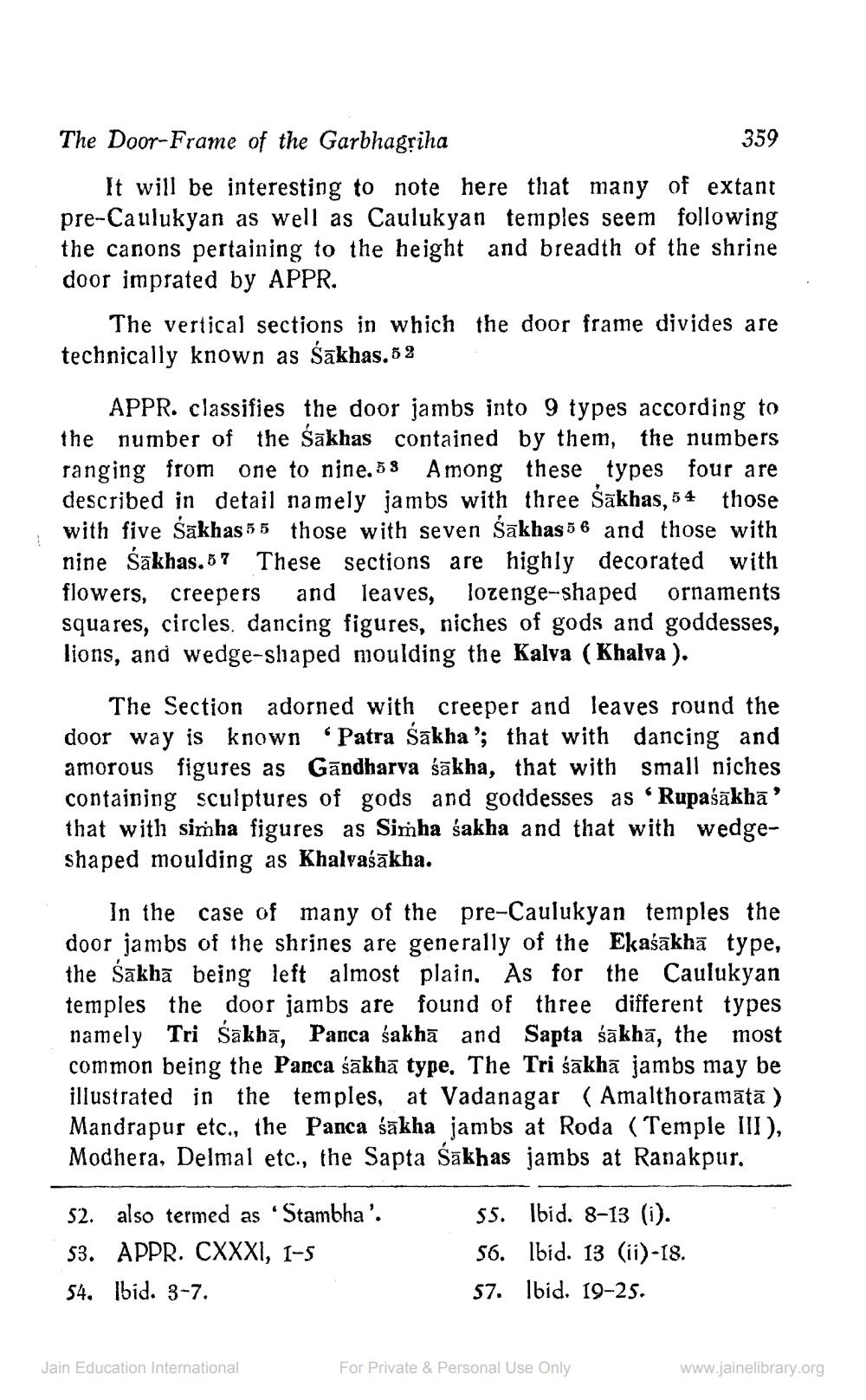________________
The Door-Frame of the Garbhagriha
359 It will be interesting to note here that many of extant pre-Caulukyan as well as Caulukyan temples seem following the canons pertaining to the height and breadth of the shrine door imprated by APPR.
The vertical sections in which the door frame divides are technically known as Sākhas. 82
APPR. classifies the door jambs into 9 types according to the number of the sākhas contained by them, the numbers ranging from one to nine. 58 Among these types four are described in detail namely jambs with three sākhas, 54 those with five Šākhas 55 those with seven Sakhas 56 and those with nine śākhas. 57 These sections are highly decorated with flowers, creepers and leaves, lozenge-shaped ornaments squares, circles, dancing figures, niches of gods and goddesses, lions, and wedge-shaped moulding the Kalva (Khalva ).
The Section adorned with creeper and leaves round the door way is known 'Patra Sakha'; that with dancing and amorous figures as Gāndharva śākha, that with small niches containing sculptures of gods and goddesses as “Rupaśākhā' that with simha figures as Simha sakha and that with wedgeshaped moulding as Khalvaśākha.
In the case of many of the pre-Caulukyan temples the door jambs of the shrines are generally of the Ekaśākhā type, the sākhā being left almost plain. As for the Caulukyan temples the door jambs are found of three different types namely Tri Sakhā, Panca śakha and Sapta śākhā, the most common being the Panca śākhā type. The Tri śākha jambs may be illustrated in the temples, at Vadanagar ( Amalthoramātā) Mandrapur etc., the Panca śākha jambs at Roda (Temple III), Modhera, Delmal etc., the Sapta Sakhas jambs at Ranakpur.
52. also termed as Stambha'. 53. APPR. CXXXI, 1-5 54. lbid. 3-7.
$5. Ibid. 8-13 (i). 56. lbid. 13 (ii)-18. 57. Ibid. 19-25.
Jain Education International
For Private & Personal Use Only
www.jainelibrary.org




